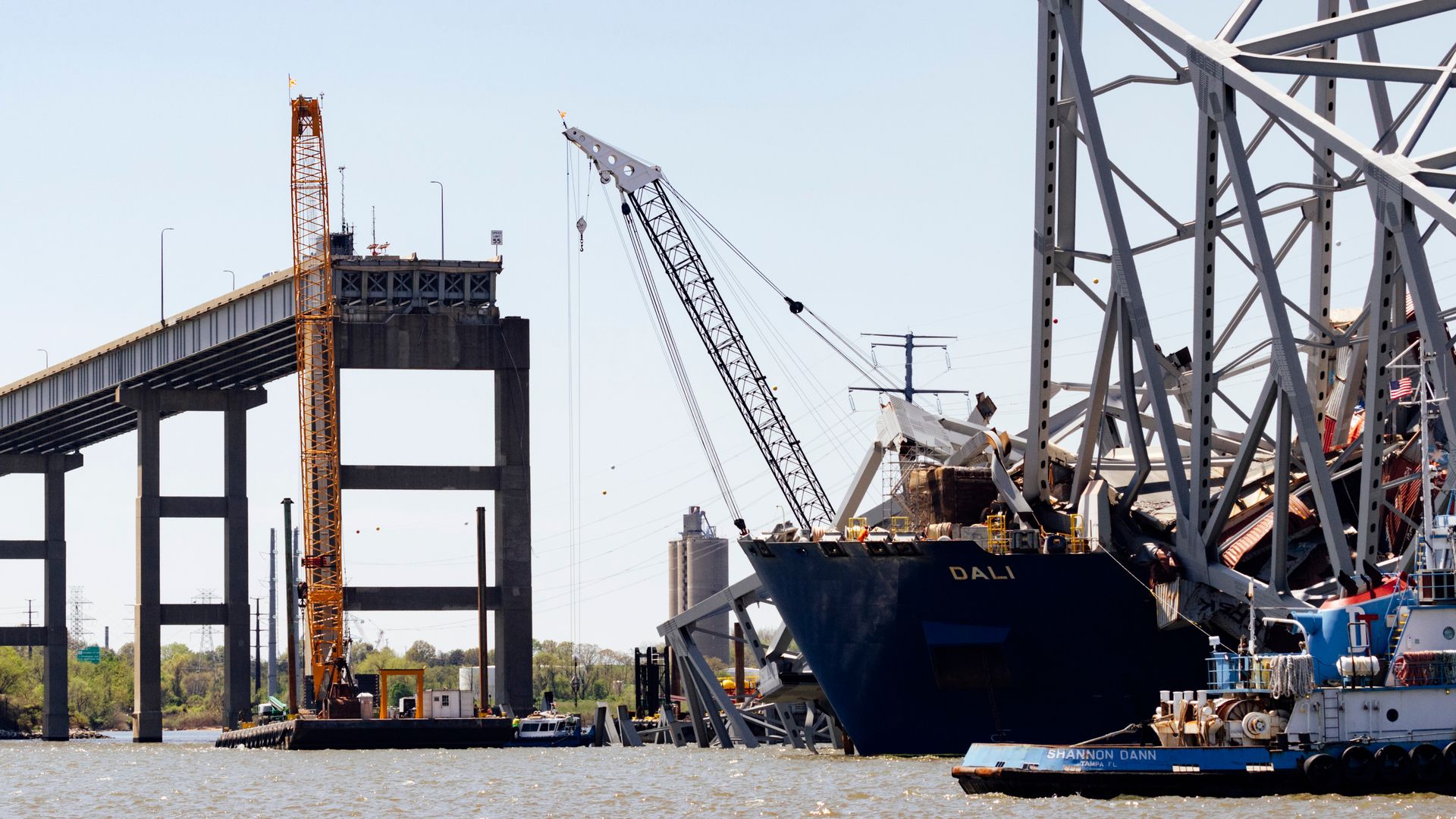
[LAUREN TAYLOR]
THE DEADLY BALTIMORE BRIDGE COLLAPSE REMAINS IN THE NATION’S PSYCHE.
SIX PEOPLE PLUNGED TO THEIR DEATHS AFTER A CARGO SHIP LOST POWER AND HIT THE FRANCIS SCOTT KEY BRIDGE LAST MONTH. NOW WE’RE LEARNING IT MAY BE PART OF A BIGGER PROBLEM.
A WASHINGTON POST ANALYSIS REVEALS HUNDREDS OF INCIDENTS WHERE SHIPS LOST PROPULSION, MANY NEAR CRITICAL INFRASTRUCTURE.
THE LATEST INCIDENT HAPPENING LESS THAN TWO WEEKS AFTER THE BALTIMORE DISASTER.
A MASSIVE CONTAINER VESSEL EXPERIENCED PROPULSION FAILURE NEAR A BRIDGE CONNECTING NEW YORK AND NEW JERSEY.
THE APL QINGDAO, WHICH STRETCHES MORE THAN 1100 FEET, FACED ENGINE FAILURE WHILE NAVIGATING A NARROW PASSAGE BENEATH THE BAYONNE BRIDGE.
THE BRIDGE IS USED BY THOUSANDS OF COMMUTERS A DAY.
MARITIME RADIO CHATTER DECLARED IT A “DEAD SHIP.”
THREE TUGBOATS HAD TO BE CALLED IN TO GUIDE THE VESSEL TO SAFETY.
EVENTUALLY THE SHIP WOULD CONTINUE ON ITS JOURNEY.
BUT IT’S JUST ONE OF MANY INCIDENTS OF CARGO SHIPS LOSING POWER NEAR CRITICAL BRIDGES AND PORTS OVER THE PAST FEW YEARS.
THE FAILURES PUT LIVES AT RISK– AS WELL AS PROPERTY– AS NOTED BY THE COLLAPSE IN BALTIMORE.
PART OF THE PROBLEM IS THE INCREASING SIZE OF CARGO SHIPS AND LACK OF CONSISTENT RULES ON TUGBOAT ESCORTS.
WITHOUT PROPER GUIDANCE, SHIPS ARE MORE SUSCEPTIBLE TO ACCIDENTS.
EXPERTS ARE CALLING FOR CLEARER RULES AND MORE TUGBOATS TO ESCORT VESSELS.
THEY SAY IMPLEMENTING REGULATIONS AND GUIDELINES FOR SHIP NAVIGATION ENHANCES SAFETY. ESPECIALLY FOR SHIPS THAT EXPERIENCE ENGINE FAILURE.







